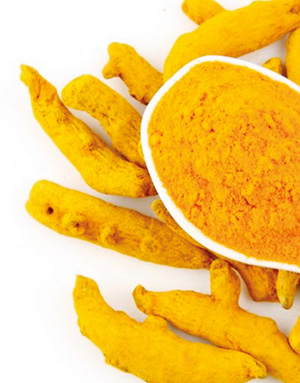A spice for life: Health benefits of aromatic turmeric
Turmeric, the bright yellow aromatic spice is found in almost every South Asian kitchen adding vibrant colour to our curries. It is the healthiest way to add flavour and colour to home cooking. Historically, turmeric, also known as “saffron” has been used as a spice as well as a powerful anti-inflammatory in both traditional Chinese medicine and Indian Ayurvedic medicine.
 Recent studies involving curcumin, an element in turmeric responsible for the bright hue suggest many health benefits. It is often used as a herbal remedy for treating pain and inflammation associated with osteoarthritis, rheumatoid arthritis, diabetes and a host of other ailments.
Recent studies involving curcumin, an element in turmeric responsible for the bright hue suggest many health benefits. It is often used as a herbal remedy for treating pain and inflammation associated with osteoarthritis, rheumatoid arthritis, diabetes and a host of other ailments.
It gets brighter still with researchers at the Diamantina Institute at the University of Queensland developing a new technology originating from turmeric that may provide hope to type 2 diabetes sufferers. In 2014, the World Health Organisation estimated that 9% of the adult population aged 18 years and over had diabetes, and approximately 90% of these people around the world are diagnosed with type 2 diabetes.
Insulin resistance occurs when the body does not use insulin properly. According to researchers at the University of Queensland curcumin in turmeric acts as a particular blocker of inflammatory signals that occur in diabetes. Their research focused on immune cells causing insulin resistance and if treatment with curcumin can off-set this by preventing the production of diabetes inducing inflammatory substances.The researchers are now optimising the curcusome technology into a drug to prevent liver inflammation in obesity, a common sign of diabetes.
If successful, it is expected that the treatment combined with existing anti-diabetic drugs will reduce complications associated with diabetes.It is hoped that curcusomes technology may also prove effective in the treatment of other conditions such as cardiovascular disease, rheumatoid arthritis, and certain forms of liver disease. Results of this study were recently published in the Diabetes Journal.
Can turmeric prevent memory loss? Research conducted by the Swinburne University of Technology in Melbourne suggests that curcumin in turmeric can improve concentration and had beneficial effects when people focussed on cognitive tasks, but the study was unable to show its impact on preventing Alzheimer’s or dementia. The researchers believe curcumin in turmeric increases blood flow and neurotransmitters important in memory and learning.
There are simple ways to boost the effectiveness of curcumin in turmeric in our kitchens. Season your turmeric containing dishes with a dash of black pepper. Black pepper will enhance the healing properties and the extent of its absorption. My 60-year-old neighbour insists that the pain she experienced from osteoarthritis has eased by consuming one teaspoon of turmeric daily with black pepper. You can also brew a cup of turmeric tea.(See recipe inset box).
So let’s continue adding colour to our meals with this beautiful spice as well as eating a rainbow of foods diversifying the colour on our plate at the table.
| Turmeric Tea Bring four cups of water to the boil. Add one teaspoon of grated fresh turmeric. Reduce the heat and let it simmer for 10 minutes. Strain. Add lemon or ginger, or both for taste. | |


